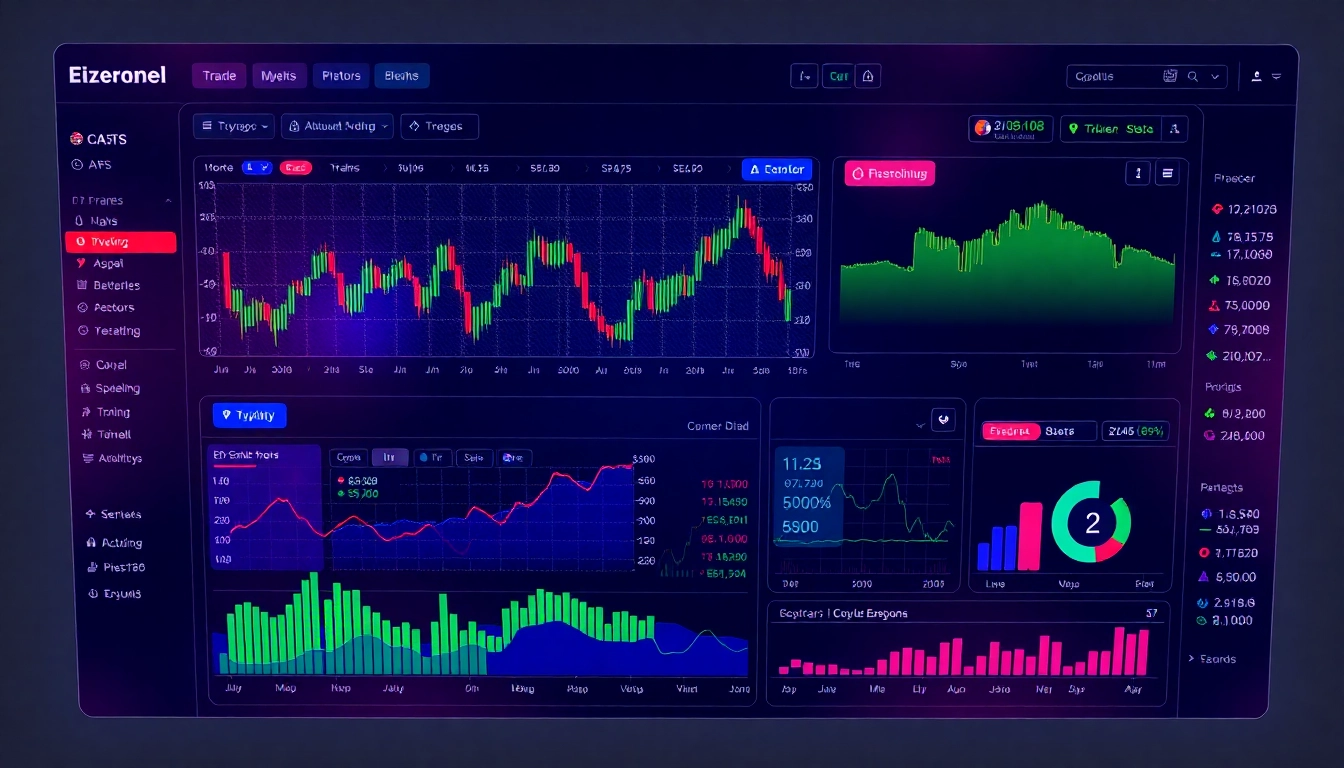The dynamic landscape of the app industry continues to evolve at a rapid pace, driven by technological innovation, shifting consumer behaviors, and innovative business models. Staying informed about the latest updates is essential for developers, marketers, and industry stakeholders aiming to maintain a competitive edge. For those seeking comprehensive insights and up-to-date trends, exploring App Industry Updates offers invaluable resources to navigate this complex environment effectively.
Understanding the Current Landscape of App Industry Updates
Recent Developments and Market Shifts
The app industry in 2024 is marked by notable shifts including the rise of AI-powered applications, increased adoption of augmented reality (AR) and virtual reality (VR), and the surge in demand for personalization and interactive experiences. Market analytics reveal that sectors such as health tech, fintech, and e-commerce are experiencing unprecedented growth, driven by consumer preferences for convenience and real-time engagement. Additionally, the emergence of low-code and no-code platforms has democratized app development, enabling more entrepreneurs and small businesses to participate in the market.
Impact of Emerging Technologies on App Trends
Emerging technologies like artificial intelligence, machine learning, 5G connectivity, and blockchain are reshaping app functionalities. AI enhances user experiences through personalized content recommendations, intelligent chatbots, and adaptive interfaces. 5G connectivity fuels the development of more immersive AR and VR applications, offering near-instantaneous data transfer crucial for real-time interactions. Blockchain introduces decentralized security measures, empowering more secure transactions and data privacy options. These technological advances are not only altering existing app categories but also creating entirely new markets and opportunities.
Key Players and Competitive Dynamics
The competitive landscape features giants such as Apple, Google, Meta, and emerging startups leveraging disruptive innovation. Large platforms are refining their ecosystems to offer integrated services that promote user retention and monetization. Meanwhile, niche players with specialized solutions are gaining traction by focusing on high-growth segments like health monitoring wearables or blockchain-based gaming. The ongoing race involves strategic acquisitions, investments in R&D, and partnerships to accelerate technological adoption and expand market reach.
Analyzing the Top App Industry Updates and Their Implications
Latest Data on User Engagement and Retention
Recent studies highlight that user engagement remains a critical performance indicator. Innovations such as personalized notifications, gamification, and seamless user onboarding significantly improve retention rates. In 2024, apps employing AI-driven insights reported up to 30% increases in daily active users (DAUs). Furthermore, retention strategies centered around community building and exclusive content are proving effective across social and gaming apps, underscoring the importance of continuous value delivery.
Innovations in App Monetization Strategies
The monetization landscape is multipronged, with freemium models, subscription services, and in-app advertising still dominant. However, new strategies like microtransactions, blockchain-based micro-ownership, and immersive AR/VR paid experiences are emerging. For instance, gaming apps integrating blockchain for virtual asset ownership have seen revenue spikes of over 50%. Personalization and targeted advertising powered by AI promise higher ad revenue by improving relevance and conversion rates for marketers.
Regulatory Changes Affecting App Development
Data privacy and security regulations are intensifying worldwide, impacting how apps are designed and monetized. Laws like the GDPR in Europe and CCPA in California require stringent user consent protocols, influencing app architecture and data handling practices. Developers must now embed privacy-by-design principles and incorporate transparent data policies. Non-compliance risks hefty penalties and reputational damage, prompting industry-wide shifts toward built-in compliance features and privacy-centric app functionalities.
Strategies for Adapting to App Industry Updates Effectively
Integrating New Technologies into App Design
Successful adaptation involves proactively embedding recent technological advancements. For example, integrating AI algorithms for predictive analytics enhances personalized user experiences, while utilizing AR/VR capabilities transforms content engagement. Developers should adopt agile methodologies to iteratively test and refine these integrations, focusing on performance optimization and user feedback. Partnering with technology providers for specialized tools can accelerate deployment and ensure robust implementation.
Best Practices for Maintaining Competitive Advantage
To stay ahead, companies should prioritize continuous innovation, user-centric design, and strategic data use. Building a flexible architecture that allows rapid feature updates and adopting practices like A/B testing help refine user engagement tactics. Monitoring competitors and industry benchmarks through analytics tools informs strategic pivots. Additionally, developing strong user communities and loyalty programs fosters long-term retention, creating a distinct market position amidst fierce competition.
Leveraging Data Analytics to Stay Ahead
Data analytics are crucial for understanding user behavior, optimizing app features, and personalizing experiences. Leveraging advanced tools like predictive modeling and heatmaps reveals insights into user journeys and pain points. Integrating machine learning-based analytics enables real-time adaptation to changing user preferences, boosting engagement and monetization. Regular data audits and privacy compliance ensure trust and transparency, strengthening brand reputation.
Case Studies: Successful Implementation of Recent App Industry Updates
Case Study 1: Boosting User Engagement with New Features
A social media app introduced AI-driven content curation and personalized notification systems, which led to a 25% increase in daily activity. By analyzing user interaction data and continuously refining algorithms, the app enhanced relevance, resulting in deeper engagement and longer session times.
Case Study 2: Monetization Growth through Innovative Models
A gaming platform adopted blockchain-based microtransactions, allowing users to own and trade virtual assets securely. This innovation created a new revenue stream, increasing in-app purchase revenue by 40% and fostering a community of engaged players invested in digital asset ownership.
Case Study 3: Navigating Regulatory Compliance Successfully
An e-commerce app revamped its data handling policies and integrated privacy management tools to comply with GDPR. This proactive approach reduced the risk of fines, improved trust among users, and sustained long-term growth despite evolving legal standards.
Future Outlook and Next Steps for Industry Stakeholders
Predicted Trends for the Next Year
Anticipated trends include widespread adoption of AI-driven personalization, expanded use of immersive AR/VR experiences, and increased regulation around data privacy. The rise of decentralized finance (DeFi) within app platforms and an emphasis on sustainable, ethical app development are also expected to shape future industry directions.
Actionable Tips for Developers and Marketers
Focus on agile development cycles, prioritize user data privacy, and invest in emerging technologies to enhance user value. Content personalization, seamless cross-platform experiences, and community engagement are key to growth. Regularly test new features with real user feedback and stay informed about regulatory changes to maintain compliance.
Building Resilience in a Rapidly Changing Market
Resilience hinges on continuous learning, flexible infrastructure, and diversified revenue streams. Establishing robust analytics frameworks allows for quick adaptation based on real-time insights. Building partnerships and investing in talent development ensures your team can swiftly integrate new technologies and adhere to evolving standards, safeguarding long-term success.



